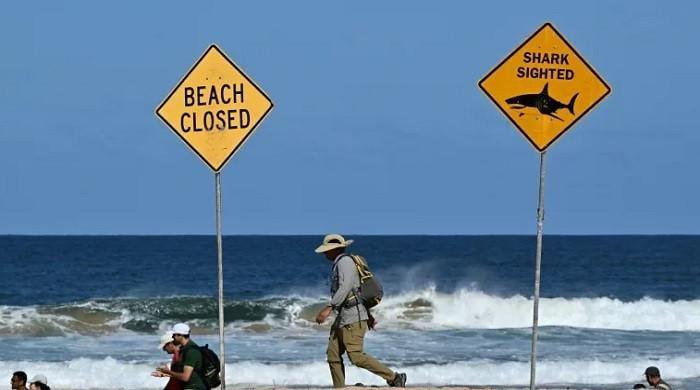A shark killed one person and seriously injured another on Thursday at a beach in Australia’s eastern state of New South Wales, rescuers and police said.
The attack occurred early in the morning and one of the victims, a woman, died at the scene.
The other suffered serious leg injuries and was airlifted from remote Crowdy Bay beach, about 250 kilometers (155 miles) north of Sydney, to hospital in a stable condition.
“They knew each other, they were going swimming and the shark attacked them,” New South Wales Police Inspector Timothy Bayly told reporters.
State Ambulance Inspector Joshua Smyth credited a bystander with potentially saving the man’s life by placing a makeshift tourniquet around his leg.
“The courage of some spectators is surprising in this situation; exposing themselves is very heroic,” he added.
Steven Pearce, chief executive of Surf Life Saving NSW, described it as “a truly terrible incident”.
“This area is so remote that there is no lifeguard service there,” Pearce told local radio 2GB.
The beach and surrounding areas have been closed and authorities are working to determine what species of shark attacked the two swimmers.
Protecting humans and sharks
There have been more than 1,280 shark incidents in Australia since 1791, of which more than 250 resulted in death, according to a database of the predators’ encounters with humans.
Data shows that ocean visitors are more likely to be stung by great white, tiger and bull sharks.
In September, a white shark killed a surfer at a popular Sydney beach.
The man, who left behind a wife and young daughter, lost “several limbs” and his surfboard broke in two, police said.
Australia’s oceans are teeming with sharks, with great whites topping the list of species that could fatally bite a human.
Undeterred, Australians flock to the sea: a 2024 survey shows almost two-thirds of the population made a total of 650 million coastal visits in a single year.
How best to protect people from sharks is a sensitive issue in Australia.
Authorities have taken a multi-layered approach: deploying drones, attaching acoustic trackers to sharks so they can be detected by listening buoys near popular beaches, alerting people in real time with a mobile app and hanging old-fashioned nets.
Researchers say shark life also needs protection.
Globally, about 37% of oceanic shark and ray species are now classified as endangered or critically endangered by the International Union for Conservation of Nature, a database of threatened species.




